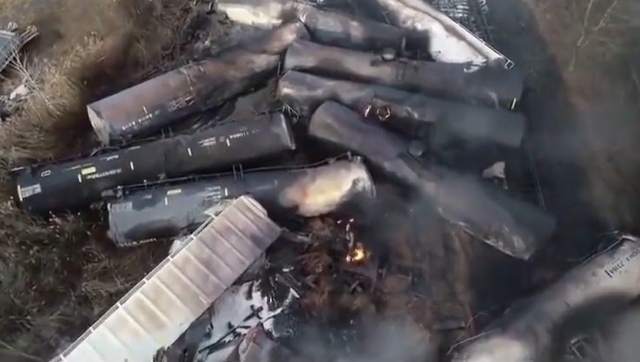
(Article by Stephen Lester republished from CHEJ.com)
If only this were true. Instead, hundreds of people who were evacuated remain frustrated by the lack of answers to their questions about health effects and accountability. This frustration is driven by how government leaders and scientists evaluate health risks and by the many uncertainties about what is known about the short- and long-term health effects associated with exposure to vinyl chloride or other chemicals. Scientists can estimate risks and give their opinions, but we simply don’t know what’s going to happen to the health of the people who were exposed to vinyl chloride in the aftermath of this accident. Yet this is exactly what people want to know – what’s going to happen to their health or to the health of their children because of the accident?
Here’s what we do know. We know that vinyl chloride is a human carcinogen and that it damages the liver and central nervous system; over 1,500 people living within a 1-mile by 2-mile area of the accident were evacuated; that Norfolk Southern opted to release and burn the vinyl chloride from all five derailed tankers releasing deadly fumes into the air to prevent a potentially disastrous explosion (see photo); that the state acted swiftly in evacuating the homes immediately surrounding the site of the accident; that 38 of the 150 cars being pulled by the train derailed; about 20 rail cars were carrying hazardous materials including five with vinyl chloride; other chemicals included butyl acrylate, ethyl hexyl acrylate and ethylene glycol mono-butyl ether. We also know that several days after the accident, most people are back in their homes with assurances from the local authorities that everything is fine.
This is not surprising because government has repeatedly responded the same way in similar situations. But what was the scientific basis for this decision? According to EPA, air samples taken immediately after the accident and the intentional burn did not identify any substances at concentrations of concern. However, it’s hard to have much confidence in this testing because the tests did not include vinyl chloride and dioxin, one of the most toxic chemicals ever conceived and the primary by-product of the burning of vinyl chloride. You can’t find a problem if you don’t test for the obvious chemicals you would expect to find in the air.
It’s no surprise then that several residents have filed suit against Norfolk Southern seeking a medical monitoring program for anyone living within a 30-mile radius of the derailment to determine who was affected by the toxic chemicals released by the accident and the subsequent burning of the vinyl chloride gas. They want medical screening for early detection of life-threatening medical conditions linked to vinyl chloride. This is a reasonable response to the many scientific uncertainties that exist in understanding what will happen to the health of people exposed to toxic chemicals like vinyl chloride.
If government leaders and scientists involved in East Palestine acknowledge the scientific uncertainties and honestly admit how little is known about chemical exposures and health outcomes, there may be a more satisfying resolution. A resolution that might include practical steps forward may be setting up medical screening for early detection of medical conditions linked to vinyl chloride.
However, if decision makers continue to protect the companies responsible for area-wide chemical exposures such as what occurred in East Palestine, this scenario will continue to play out as it has since the days of Love Canal more than 40 years ago. Isn’t it time we publicly acknowledge what we don’t know about exposures to toxic chemicals and stop deluding ourselves that using risk estimates that define “acceptable” exposures is the best way to manage exposures to toxic chemicals? There is no acceptable exposure if you’re the one being exposed.
Read more at: CHEJ.com
Please contact us for more information.



















